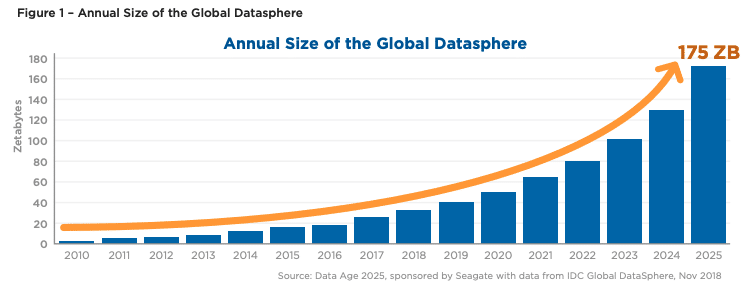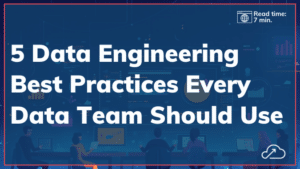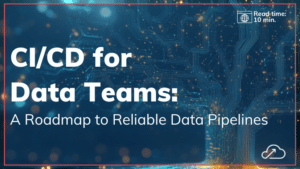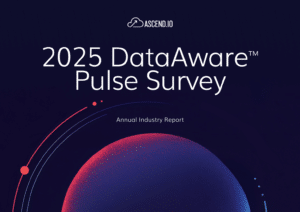Businesses are in a continuous race to harness data as a powerful propellant for innovation. Yet, the task of efficient and prompt data delivery remains a challenge. The demands of building, scaling, and maintaining data pipelines have grown increasingly complex and error-prone. Data engineers are now drowning in repetitive tasks, aspiring to drive data-backed decisions.
Traditional approaches to building these pipelines have showcased their vulnerabilities. Fragmented solutions for each data pipeline step have proven inadequate, resulting in inefficiencies and system failures.
But there’s light at the end of this tunnel: automated data pipelines. In this article, we dive into what they are, their key components, and how ultimately they free up technical talent to focus on strategic business enhancements.
What Are Automated Data Pipelines?
Traditional data pipelines and their automated counterparts share a common purpose: they collect data from its original sources and deliver it to new destinations, refining it en route. The distinction, however, lies in their operational depth.
Automated data pipelines are more than mere data conduits. They’re embedded with intelligence, understanding not only the data they transport but also the code that shapes it. This empowers them with capabilities unattainable in traditional setups, including reduced maintenance, optimized performance, and diminished dependency on data engineering professionals.
This positions automated pipelines in a proactive stance, a striking deviation from the reactive nature of traditional pipelines.
Anatomy of an Automated Data Pipeline — with Examples and Use Cases
The Single Pane of Glass: The Central Nervous System
Fragmented approach to data pipelines versus a single pane of glass.
Adjusting to Changes in Real Time: The Reflexes
How automated data pipelines manage change.
Data Quality Checks: The Immune System
How to build proactive data quality checks.
Adaptable to Any Data Cloud: The Respiratory System
How to run pipelines across multiple data planes.
The Need to Automate Data Pipelines
The Traditional Landscape
The Growing Pressure
Today’s digital landscape presents a two-fold challenge. On one hand, businesses are producing data at unprecedented volumes, with estimates suggesting that the digital universe will reach a staggering 175 zettabytes by 2025. On the other hand, the complexity is intensifying. Data is not merely proliferating in volume but also in diversity, originating from a myriad of sources, each with its unique format and protocol.
This combination of volume and variety is rendering the traditional methods of data management not just inefficient, but wholly unsustainable. Businesses find themselves at a crossroads: continue with the dated, labor-intensive methods and risk being drowned in a deluge of data, or evolve and adapt.

The Imperative Shift to Automation
The solution is clear – data pipeline automation. Organizations can no longer afford the luxury of time or the margin of human error. They need systems that are nimble, efficient, and self-sustaining. Automating data pipelines transcends the limitations of traditional methods, offering a way to not just manage but to truly harness the potential of data.
Benefits of Automating Data Pipelines
By automating the creation, management, and monitoring of data pipelines, businesses unlock:
- Turbocharged Efficiency: Think of automated data pipelines as the express trains of data transit. They eliminate the frequent stops of manual checks and interventions, ensuring data reaches its destination at breakneck speeds. This swift movement translates into rapid insights, catalyzing nimble decision-making.
- Unwavering Precision: Human error is a natural byproduct of repetitive, manual tasks. Data automation, on the other hand, offers a guardian that vigilantly monitors data, ensuring each byte is processed with unmatched accuracy and consistency.
- Future-Proof Scalability: Automated pipelines are akin to self-expanding containers. As data grows, these pipelines stretch, adapt, and accommodate, ensuring businesses remain agile in the face of evolving data needs.
- Boundless Flexibility: With automated data pipelines, businesses aren’t boxed into rigid frameworks. These pipelines can dance gracefully across varied data sources, transformations, and destinations, allowing for a tailored fit to unique enterprise conditions.
Setting the Gold Standard in Next-Gen Data Tech
Data engineers: you’ve witnessed the evolution of the data landscape, from rudimentary databases to expansive data lakes. You’ve been the backbone, translating raw data into actionable insights. As stewards of innovation, it’s time to ask: are you merely keeping pace, or are you setting the pace?
Automating data pipelines isn’t just a trend; it’s an essential evolution in the world of data management. Harnessing this tech isn’t just about streamlining — it’s about pioneering, breaking the mold, and redefining what’s possible.
So, the challenge stands: will you rest on the laurels of yesteryear’s achievements, or will you seize automated data pipelines, exploring their vast potential and setting new standards in the world of data engineering?
Read More: What Is Data Pipeline Automation?





